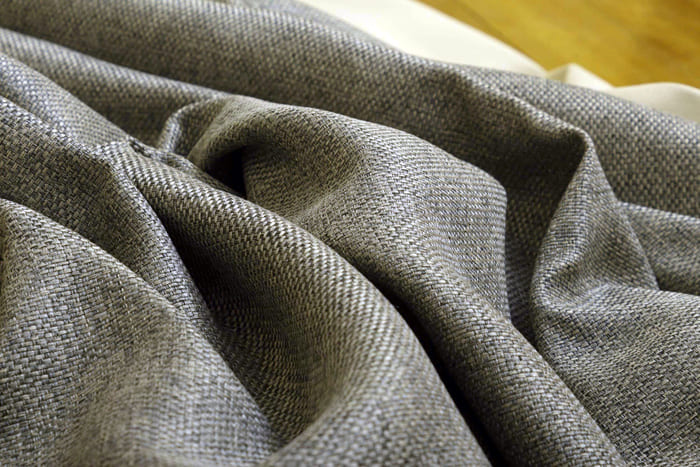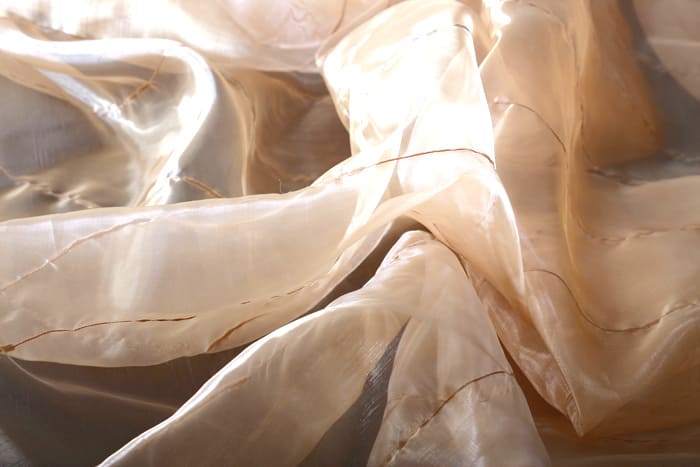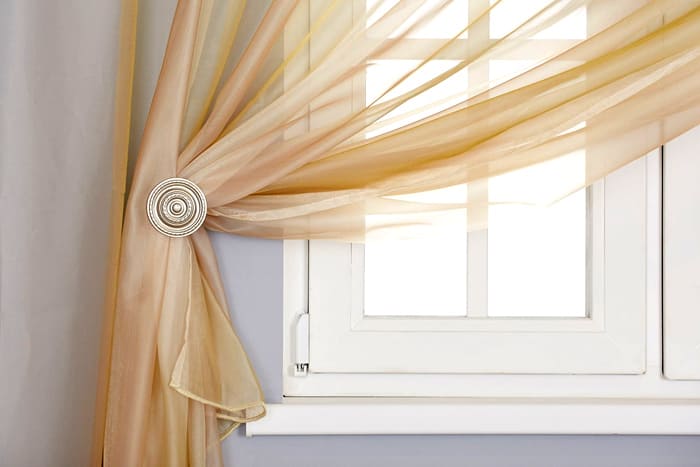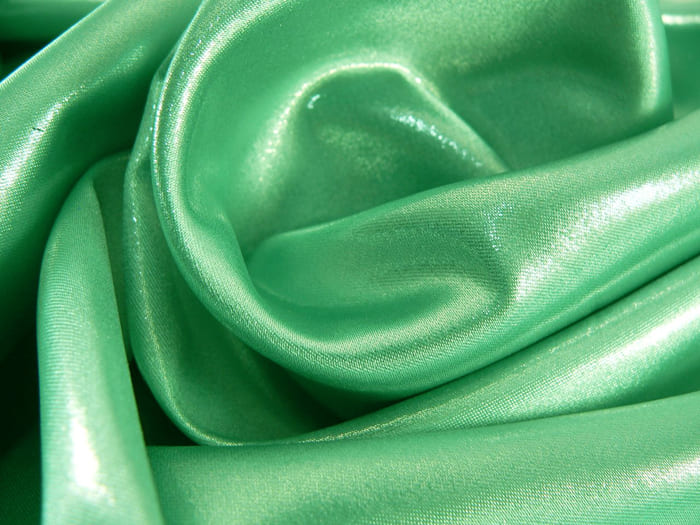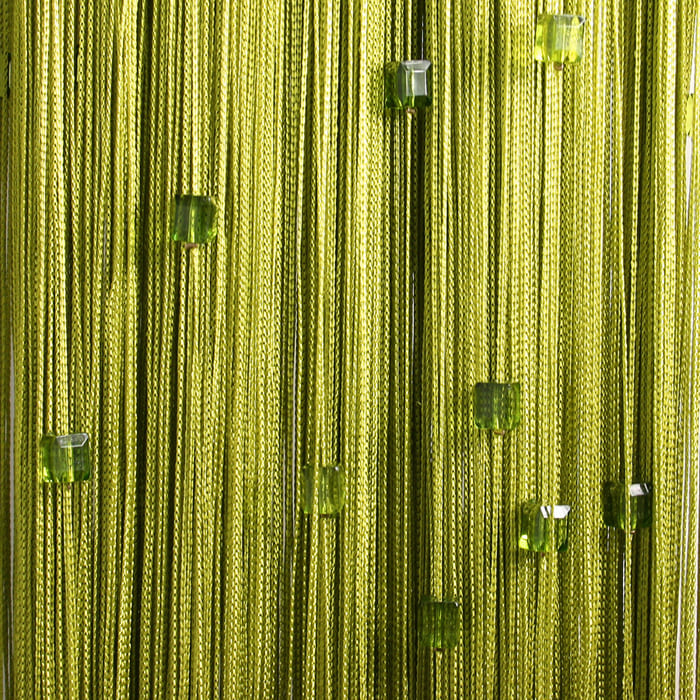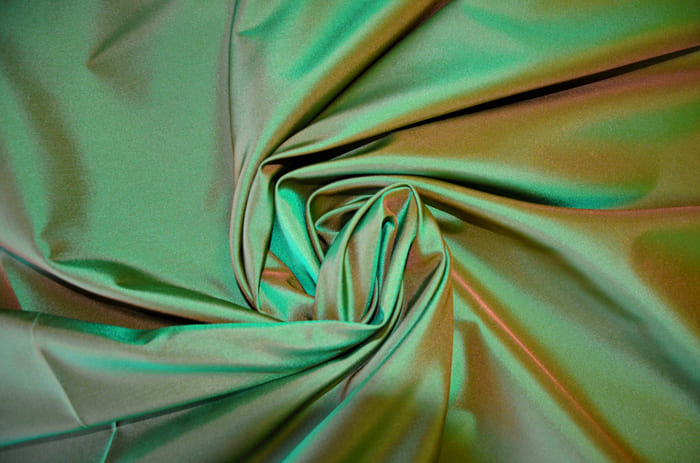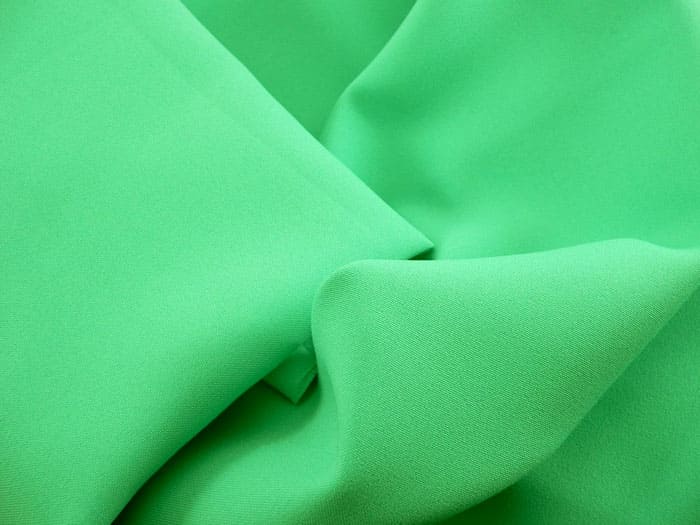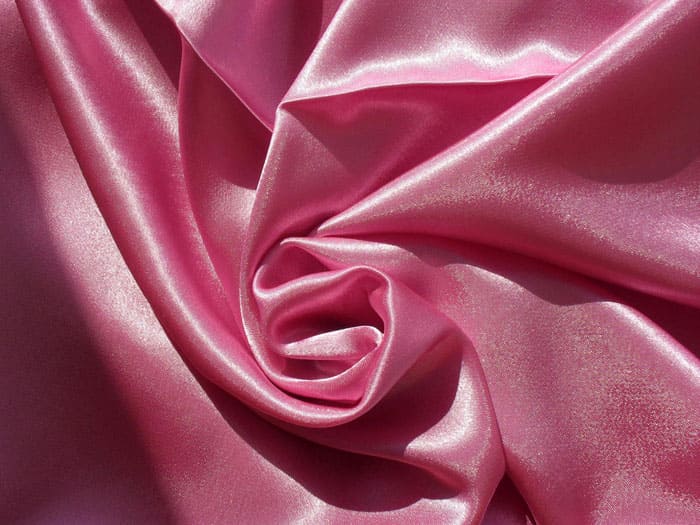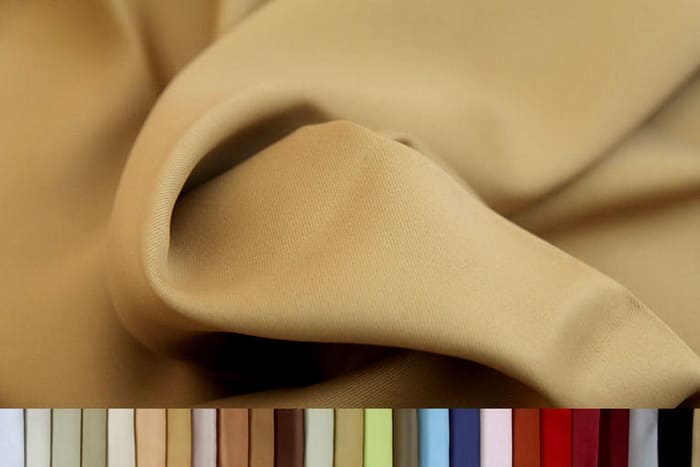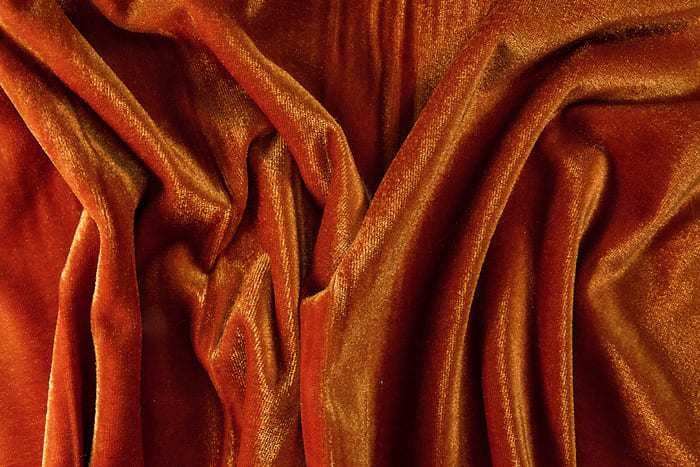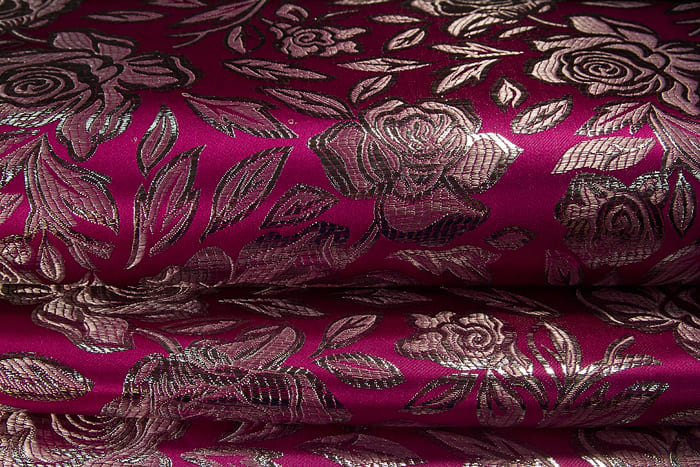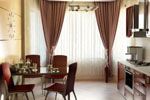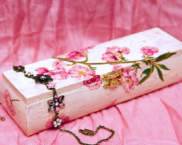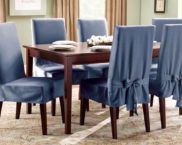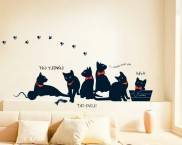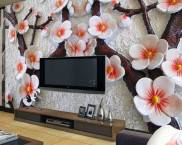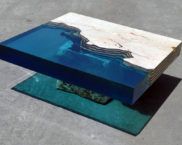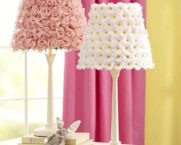Window as a decor element: choosing fabrics for curtains
Charm, brilliance and a sense of style in home design it is the window curtains that support. Therefore, it is important to know the possible textures of fabrics for curtains, their types and be able to determine how much they fit into an already invented interior. The homemaster.techinfus.com/en/ editorial team will tell you in detail about the varieties, as well as the requirements that are adhered to in the production of such an important accessory.
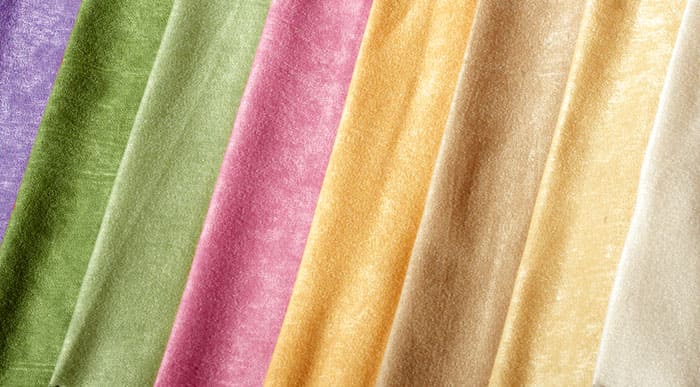
Soft curtain fabrics are usually lightweight, so they do not require a special curtain rod
PHOTO: kupitul.ru
The content of the article [Hide]
Requirements for curtain fabrics
When choosing textiles for sewing curtains, special points must be taken into account. This primarily concerns the requirements that home curtains must meet. These include:

When buying matte fabrics, it is advisable to consider the visibility of the weave of the fibers. This creates an interesting accent.
PHOTO: allshtori.ru
Depending on the room for which the curtain will be chosen, it makes sense to pay attention to the density of the fabric from which it is sewn.
Types of textiles for curtains: what are home curtains made of
The fabrics from which the curtains are made are usually divided into three groups.Based on this classification, you can make a choice in favor of one or another option.
Natural textiles
Collectible models of curtains are made from natural fabrics. These include linen, cotton, wool. These materials lend themselves well to dyeing, embroidery and draping. In short, they behave perfectly during the entire preparation for the sale. The advantages of this textile include:

In natural canvases, weaves of fibers are usually clearly visible. Some models even have to be prepared manually
PHOTO: tesdecor.ru
As for the cons, there are a little more of them. It:
Such fabrics are created by weaving, therefore, at the slightest tear, they begin to unravel from the edges. Repairing these curtains is very expensive.
Artificial fabrics
Artificial textiles include polyester, organza, jacquard, viscose. These options quickly attract attention with their colors. Curtains made of materials of this type are allowed to be washed in an automatic machine, after which they do not lose their qualities. The advantages of artificial materials include:

Satin stitch or ribbon embroidery is often acceptable on artificial fabrics.
PHOTO: tessutidelarte.com
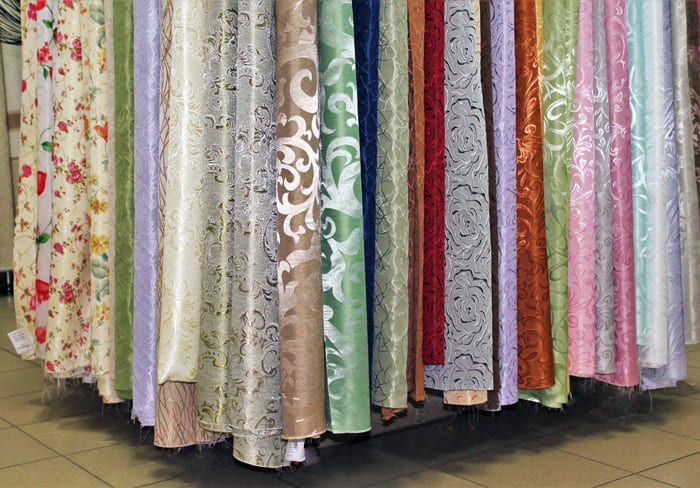
Usually, unnatural textiles are complemented by various ornaments or patterns, which increases the price
PHOTO: shtoshtory.ru
However, the disadvantages are not excluded:
In addition, polyester and organza are susceptible to static electricity and, as a result, to dust concentration.
Mixed
Such fabrics contain both natural and synthetic fibers. Therefore, it is impossible to talk about the absolute safety of such options for the home. Combined fabrics look very elegant, although they are part of a series of economy class fabrics.
As for the merits, they are multiplied due to the combination of two matters. In the manufacture of such raw materials, manufacturers try to avoid bad qualities.
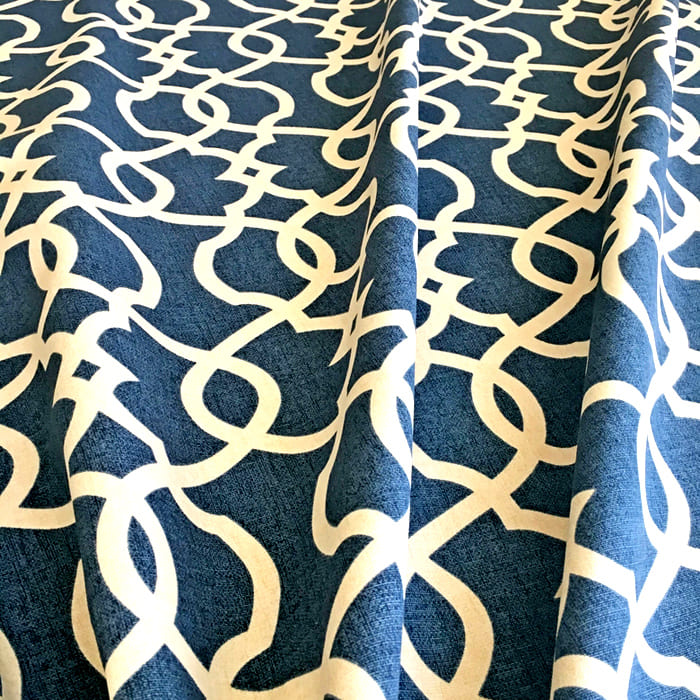
If the dye remains on your hands when probing the tissue, you should not purchase such a model. It's a fake copy
PHOTO: lunafabric.by
Related article:
Common curtain fabric options
If you cannot independently choose the appropriate style of ready-made curtains, then you can purchase custom-made curtains. However, there is also a difficulty in choosing. Consider the most popular curtains used in modern homes.
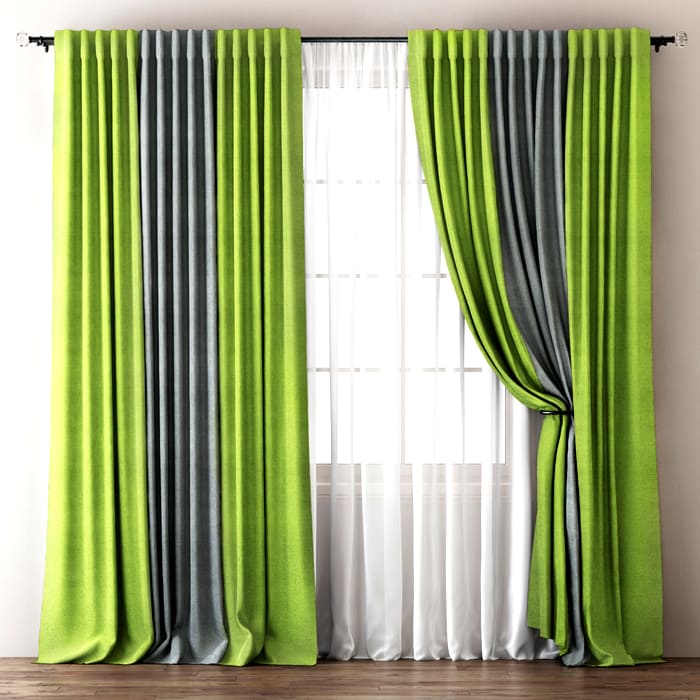
For indoor combined curtains, you should choose textiles of the same brightness
PHOTO: horeca.pasionaria.ru
Linen and matting
Linen is considered to be of high quality and safe, since it does not contain allergic components. Density and rigidity allows you to shade the room well, which is sorely lacking in the hot season. Linen is perfectly washable and does not fade in the sun.

Mattress by the type of weaving of threads can be distinguished from other fabrics
PHOTO: respect-decor.ru
The mat has a rough texture, so sometimes its surface is fleecy. Differs in the quality of the weave of the fibers. They are staggered.The material does not require special care, does not deform after cleaning. The only drawback is the inability to correct the puffs left by pets.
Organza and tulle
Organza is a great option for kitchens. The fabric is transparent, wrinkle-free. Such textiles are suitable not only for floor curtains, but also as a basis for other interior accessories.
Tulle may have a different structure. Usually, when choosing curtains, this material is used as an addition. As a rule, such an accessory has a thin base. Often, this is a translucent mesh fabric.
Jacquard and satin
Jacquard curtains can be used as a bright addition to furniture made of the same fabric and with the same color. Textiles are easy to care for and can be washed at home. After a thorough spin, it is important to immediately hang the canvas on cornice... This will prevent the curtains from creasing.
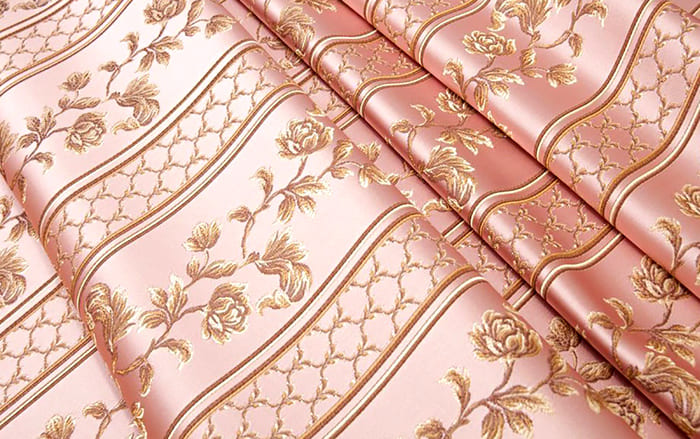
One cannot help falling in love with such fabric. How talented can curtain textiles be designed?
PHOTO: tver.m4y.ru
Satin is considered a heavy fabric, therefore it is often used for curtains. From this fabric, you can create night curtains of various styles, they can easily withstand drapery. The fabric has a glossy front side, practically does not show through. These curtains create great shading in the room.
Kisei and taffeta
Kiseya is a translucent fabric, the curtains from which are universal and can be used for any room in the house. The material is completely transparent, it can be used not only for sewing basic curtains, but also for spectacular lambrequins.
A lot of home textiles are made from taffeta, including curtains. The fabric is distinguished by its brilliance and the ability to form chic volumetric folds. The most unusual curtains will be made from compressed matter. They can be created in different styles. Taffeta is considered a delicate fabric and therefore requires special care. Washable in lukewarm water with a care product.
Flock and gabardine
Flock comes in a variety of bases: cotton, rayon, polyester and nylon. Therefore, the finished material has different pile densities. Flock curtains are durable, practical and pleasant to the touch. The texture of the fabric is made in such a way that dirt is easily cleaned out of it.
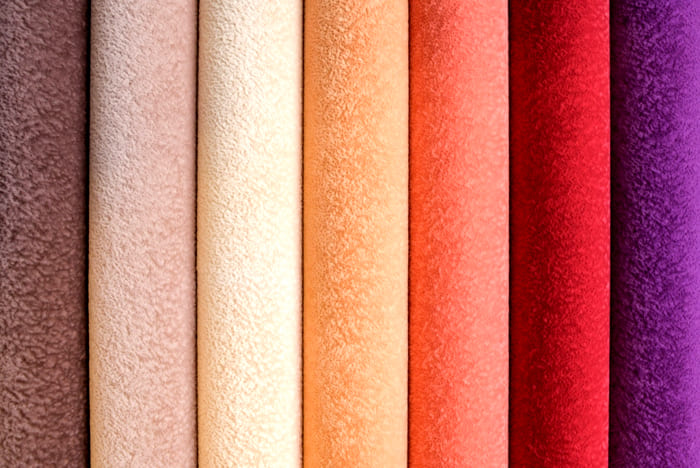
If you look closely, the texture of the flock has microscopic bald patches, which is great for the style of the curtains.
PHOTO: June 9.rf
Gabardine is a fairly strong material with a fine-crimped fiber structure. Textiles have a water-repellent property, due to which they are used even in bathrooms and on terraces. Caring for gabardine is simple - it can be machine washed and does not require ironing. Over time, the matter does not fade, does not stretch, therefore it has an attractive appearance for a long time.
Satin and chenille
Satin is a material that is pleasant to the touch, pleases with a variety of colors. It is often used for sewing night curtains and tulle. The material drapes well and lends itself to delicate washing. However, it crumples if misused. Wrinkles can only be smoothed out with steam.
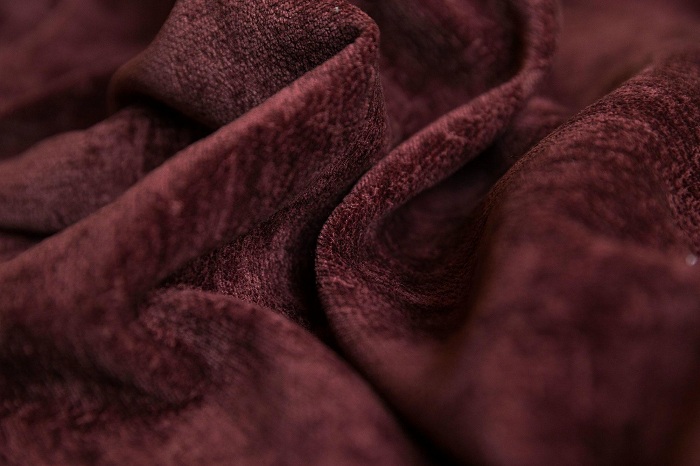
The soft structure of the material for sewing curtains is not often used in its pure form
PHOTO: sofme.ru
Chenille is a fabric with a special weave of threads. Differs in elasticity, does not shrink after washing. However, when treated with water at a contrasting temperature, deformation is inevitable.The fabric is dyed with special agents that do not fade during washing and do not fade over time.
Veil and blackout
One of the most common fabrics that are used at home for sewing curtains is a veil. This material has a translucent texture that lends itself to creating various designs. The surface of the fabric is matte, so there are traces of wet spots on it.
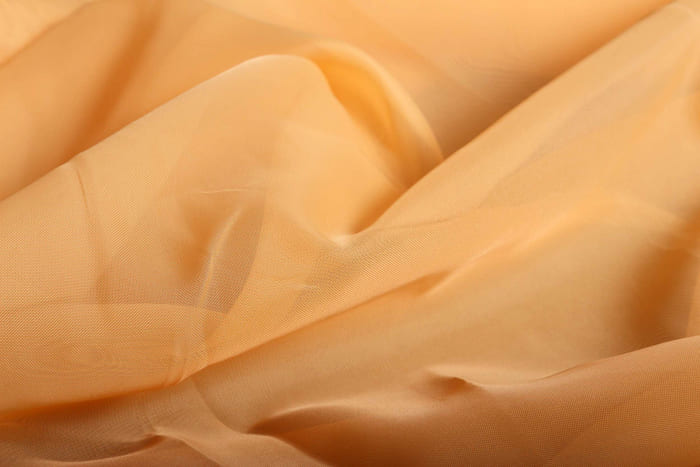
So that the veil does not bloom, the bottom edge is hemmed, edged on the sides with a ribbon
PHOTO: kupitul.ru
Blackout is a very comfortable and practical textile. Curtains made of it create good shading in the room, protect the room from the penetration of ultraviolet rays, debris, dust and wind. The denser structure of the canvas will hide some of the sounds.
Velvet and brocade
The velvet material lends itself well to draping, so you can form interesting sweets from it, emphasizing a specific design. Even after washing, the soft pile remains elegant and rich. Textiles can have patterns in the form of monograms or be solid.
Brocade is an artificial fabric used for sewing curtains and thick tulles. The fabric is easily draped, practically does not wrinkle and does not fade. Such models are allowed to be washed in a machine at a temperature not exceeding 30 ° C.
How to choose curtain and tulle fabrics for different rooms
Natural curtain fabric is considered the best option for home use. As for the tulle, it should not have an allergy-causing compound or emit an unpleasant odor. Which of the materials to choose depending on the purpose of the room, we will consider in the section below.
Living room and kitchen
A room where guests are always invited should not be full of bright shades of tulle and fabrics. Everything in this room is based on calm pleasant conversations. Accordingly, the material should be light and unobtrusive. Curtains made of natural and light textiles are ideal for decorating windows in the living room. With modern design, the use of thick curtains is allowed, provided that they are collected in chic folds and folds.
Related article:
In the kitchen, it is important to use only practical materials on the windows. It is desirable that they have dirt-repellent properties. At the same time, the curtains must withstand multiple changes in temperature and humidity. When choosing, keep in mind that textiles will have to be washed a lot. Mesh tulle, voile and jacquard can be safely used to decorate guest rooms, kitchens and dining rooms.
Related article:
Bedroom and nursery
The bedroom is the only place where you can calmly rest and recover after hard days. Therefore, the general atmosphere here should be relaxing. To do this, you need to choose a material for curtains with unobtrusive shades. Dark opaque curtain textiles and translucent satin tulle are great options. As for the colors, it is better to focus on the overall design of the room and the tones that prevail in the interior.

Curtains in the nursery can have knot loops. For such models, it is better to use fabric that will not randomly bloom.
PHOTO: happymodern.ru
When choosing fabrics for curtains in a children's room, you need to remember about their practicality and hypoallergenicity. A small amount of synthetics in the canvas is encouraged. This will make it the most durable and durable. As for the colors, you can fantasize without restrictions. Bright, patterned, transparent, pastel colors - all of this can be used both alone and in combination, emphasizing the overall design of the bedroom.
Video: options for popular and harmless fabrics for home curtains

When choosing a material, you should always focus on what function they should perform. If these are dense fabrics, then they are suitable for night curtains, but light and transparent thread materials are, rather, a model for decorating a window.
Dear readers, if you have something to tell and add on this topic, write to us in the comments. Also, don't forget to rate the article and ask questions. Our team is happy to receive feedback, so they will definitely answer you.





